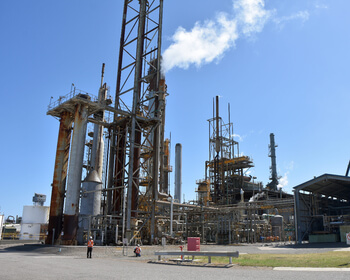
In the world of explosives, ANFO is a term that often arises. But what exactly is ANFO? ANFO stands for Ammonium Nitrate Fuel Oil, a powerful explosive compound widely used in various industries, including mining, construction, and quarrying. This article will delve into the basics of ANFO, its composition, properties, and common applications. By understanding ANFO, you can gain insights into its uses and the safety precautions associated with handling this explosive substance.
Composition and Components
ANFO is composed of two primary components: ammonium nitrate (NH4NO3) and fuel oil (commonly diesel fuel). Ammonium nitrate provides the oxidizing agent, while the fuel oil acts as the energy source. Typically, the ratio of ammonium nitrate to fuel oil in ANFO is approximately 94:6. This specific ratio ensures a stable and effective explosive mixture.
Properties and Characteristics
ANFO possesses several key properties that make it a preferred choice for explosive applications. It is a low-cost explosive, easy to produce and transport, and relatively safe to handle compared to other high explosives. ANFO is highly stable under normal conditions, but it requires a blasting cap or booster to initiate the detonation process. Once detonated, ANFO releases a large amount of energy in the form of an expanding gas and a shock wave, causing fragmentation and displacement of the surrounding materials.
Manufacturing and Blending Process
ANFO is commonly manufactured on-site or in specialized facilities. The process involves blending the ammonium nitrate prills (small spherical pellets) and fuel oil in a controlled environment to ensure a homogenous mixture. Specialized equipment, such as mixing vessels, pumps, and conveyors, is used to achieve the desired consistency. The blended ANFO can be customized by adjusting the composition or incorporating additives for specific applications.
Common Applications
ANFO finds extensive use in various industries due to its cost-effectiveness and versatility. It is primarily employed in mining operations for blasting rock and ore, enabling easier excavation and extraction. ANFO is also used in construction projects to demolish buildings, dig ditches, and excavate tunnels. Additionally, it serves as a powerful seismic explosive for seismic surveying and geophysical exploration. However, it’s important to note that the use of ANFO may be subject to legal regulations and safety guidelines in different jurisdictions.

Safety Considerations and Regulations
Due to its explosive nature, handling ANFO requires strict adherence to safety protocols. Storage and transportation of ANFO must comply with regulations, including proper labeling, segregation from incompatible materials, and adequate ventilation. It is crucial to store ANFO in approved magazines designed to mitigate the risk of accidental ignition or detonation. Personnel involved in ANFO handling must undergo specialized training to ensure safe practices and minimize potential hazards.
Environmental Impact and Sustainability
While ANFO is an effective explosive compound, its manufacturing and usage can have environmental implications. Ammonium nitrate, if not handled properly, may pose risks of soil and water contamination. It is essential for industries to implement proper waste management strategies and follow environmental regulations to mitigate potential environmental impacts.
Conclusion
ANFO, an abbreviation for Ammonium Nitrate Fuel Oil, is a widely used explosive compound known for its cost-effectiveness and versatility. Understanding the composition, properties, manufacturing process, and safety considerations associated with ANFO is crucial for industries that utilize explosive materials. By adhering to safety guidelines and environmental regulations, ANFO can be harnessed as a powerful tool in various applications while minimizing risks and ensuring the well-being of personnel and the environment.

Leave a Reply